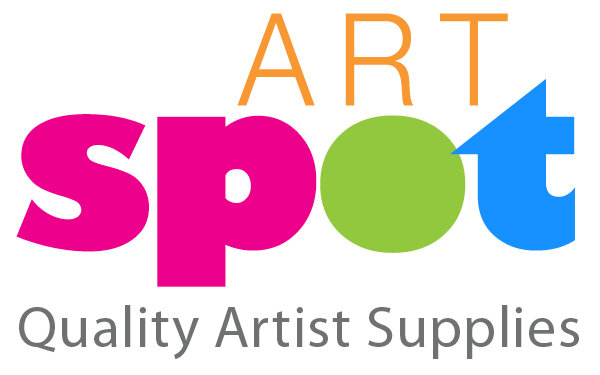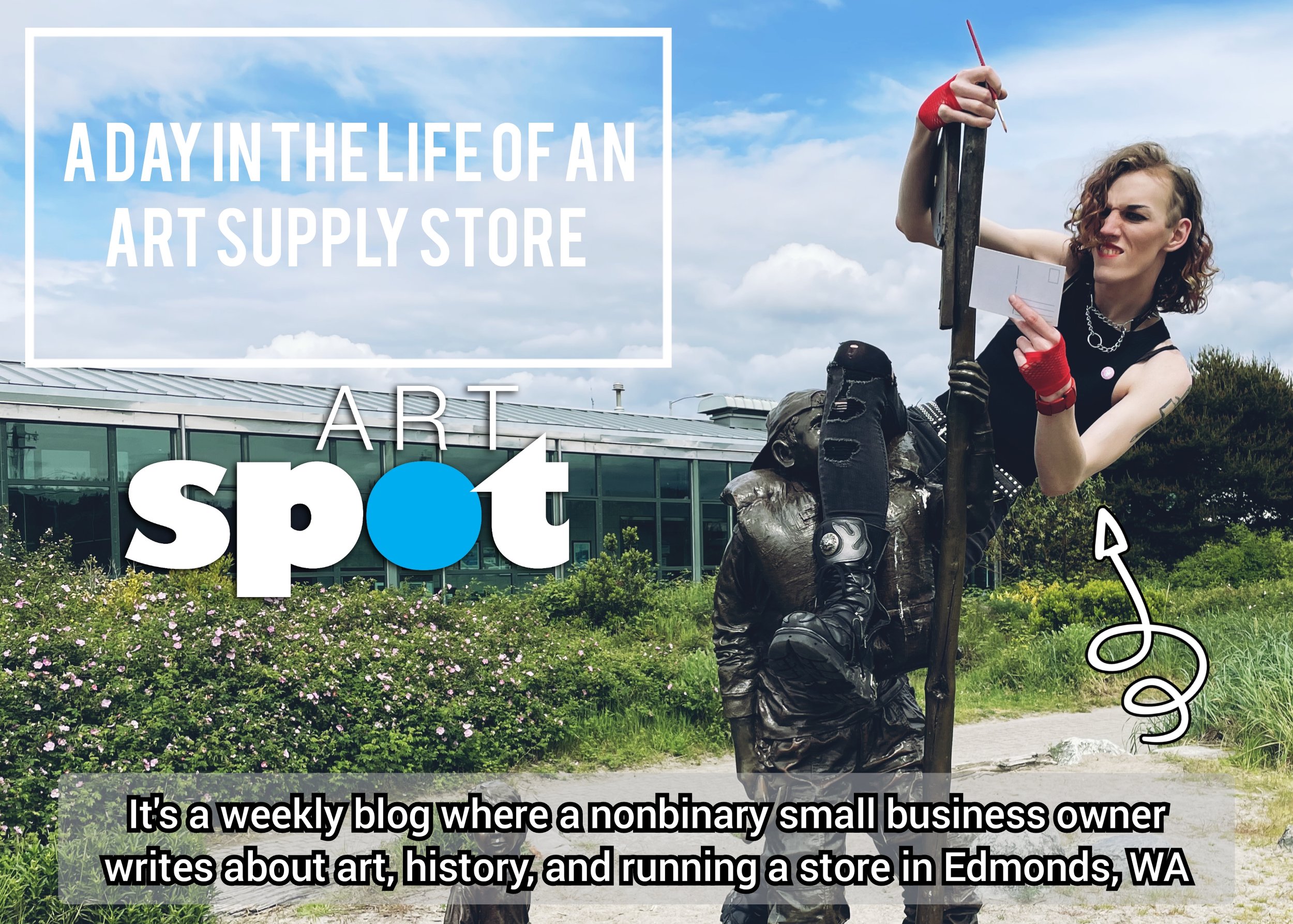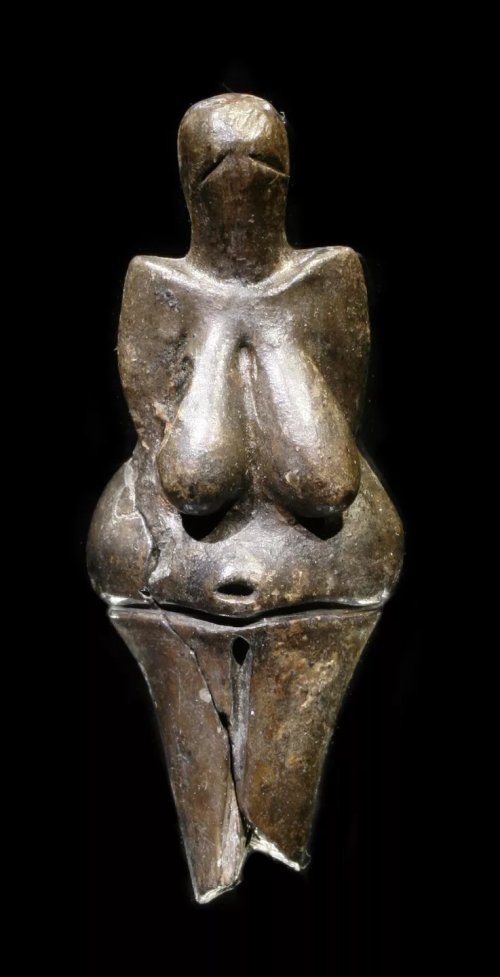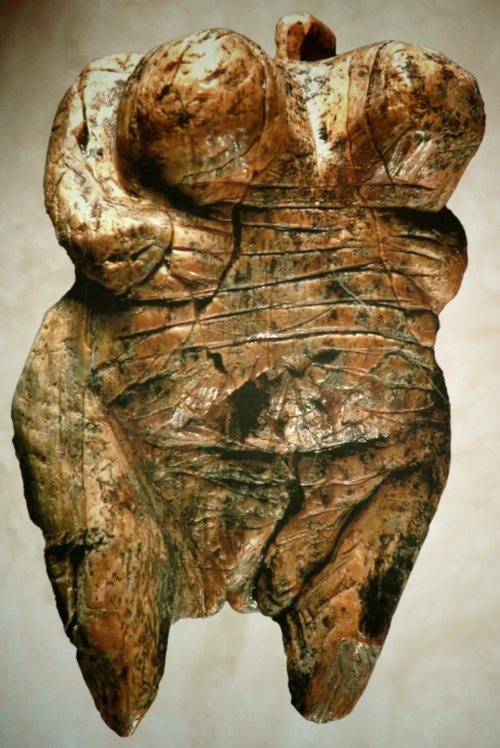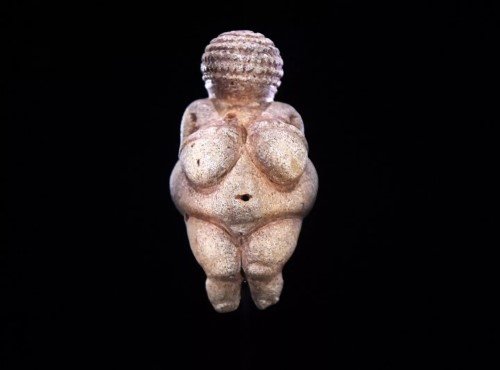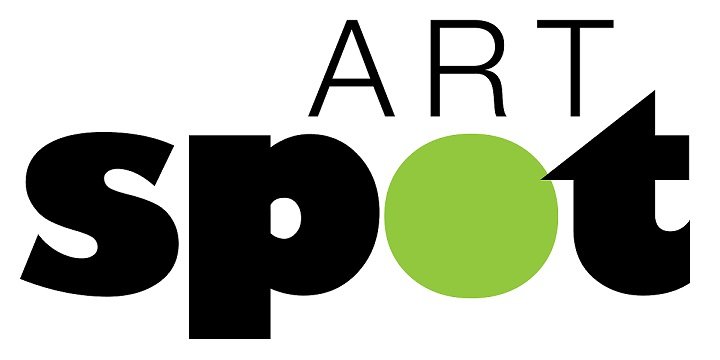About six years ago I started coming to terms that the terms “boy,” “man,” or “sir,” radically didn’t apply to me(1), and I started a deeper exploration…
…of the history and background(2) of a historically loaded term: femininity. In addition to tapping the immediately available human resources in my life for thoughts and opinions, I was immediately drawn to consider femininity through art and the people who make it.
My mom had participated in several shows and personal projects that had centered around or skirted the subject. Goddess forms, vessels, and such had been a somewhat common abstract form in her work since moving away from still life(3) in the mid 2000’s. Art of the feminine spirit, by the feminine, is disappointingly difficult to find in a field historically saturated by male perspectives. The female form has been relegated simply to that of the subject in western art for centuries as the norm. This does, however, make the gems all the shinier. I was lucky to have been raised by Tracy, who bridged some of the gaps between second and third wave feminism. I was lucky she also happened to be a visual artist with a body of art that literally surrounded me at all times while growing up.
When we take a step back to consider the wider context, this blog’s rough generalization of art and history(4) considers a notable shift in the vibes(5) between the truly ancient and the times of agriculture and written history. There is a veritable terracotta army’s worth of figurines from prehistory that depict the feminine form. The best guess that archaeologists have about their function(6) and symbolism may indicate that many pre-agricultural groups of people may have been matriarchal or at least more egalitarian. If that were true, it may be reasonable to think that the women of those groups would have some control over how their form was represented and how those representations are used. As it happens, many objects like this have been assigned religious significance. To me, it follows that contemporary art with themes of femininity seek to reconnect with this idea of “The Divine Feminine.”
Female divinity and spirit, though under varying levels of attack and suppression for most of written history, has never and will not be squashed. A somewhat disappointing reality, however, is that the feminine experience has mostly been represented through a masculine lens(7) for most of recorded history. There’s a lot of thoughts and opinions on why and how men achieved a generally dominant position for many centuries(8). One definite outcome of this, however, is that men are grossly overrepresented as artists in the past(9) and present. With multiple waves of feminism rocking the world in recent decades, I think it makes sense for artists who lean towards femininity themselves to look towards these artifacts from the distant past as a connection not just to divinity and power, but especially the power to create(10).
I recognize that I stand to make a bit of an ass of myself this month on account of my relatively recent calling away from strict masculinity. It’s fully my intention to use the time during Women’s History Month to amplify the creative voices of those leaning toward femininity(11) in the arts. I’m aiming to make entries on Artemisia Gentileschi, Kara Walker, and Betye Saar so as not to give the whole spotlight to artists who’ve already made their grand exits. If any readers have any other suggestions, comment on this post or message ARTspot on Instagram(12). I’d love to put together a few mini bios of other great femme artists!
(1) My full royal title is Transfeminine Genderqueer. It means I was assigned male at birth, don’t recognize the validity of a gender binary as it would apply to me, lean femme on any given day, but sometimes I do grow a beard for the fun of it and to make certain people reckon with the uncomfortable truths surrounding most binary arrangements.
(2) Trust me to have a big feeling and immediately start researching to put it in a historical context. Costume history class was a great gateway to lure me back into the arts in college, but I’d initially gone to school for history and teaching.
(3) I grew up in a house with a lot of art of pears on the wall. They were and still are good pears.
(4) Six hundred words and some generously verbose footnotes is NOT enough space to dedicate to a thorough breakdown of these topics. Feminism and art history are both complicated, nuanced, and vast. These blog posts are little more than hot takes. I greatly encourage you to do some lateral reading about any topics you have a strong reaction to!
(5) The spirit, the soul
Of that which we consider.
The vibe is the thing.
(6) Fun fact: I minored in archaeology in college because I couldn’t let the arts take me fully. It’s a bit of an inside joke in the field when things are labeled “ritual objects,” as a sort of code for “we have no idea what this was for.” It’s infuriatingly hard to classify things without a lot of context, which is increasingly sparse the further down one digs. Imagine an archaeologist 10,000 years from now trying to classify a crucifix found in the outline foundation of a cathedral that happened to be found nearby to a garbage bin. That’s a ritual object just like the remnants of the smartphone next to it. Long story short, we weren’t there 26,000 years ago and have no actual idea what the Venus of Willendorf was all about. We just have some educated guesses.
(7) I was hoping not to write the words “male gaze,” in this entry, but here we are with the Legally Distinct “Masculine Lense.”
(8) I don’t often throw my sources out there because I’m a lazy art person, not a proper academic. However, I’d highly recommend giving Caliban and the Witch (Silvia Federici, 2004) a read. It largely focuses on primitive accumulation in pre-capitalist systems, but generally explores some motivations for why western society turned against itself in the middle ages and burned a bunch of people.
(9) If you’re not aware, just take a look at Michelangelo’s many hilarious attempts at breasts. The guy did dudes just fine, but wow I wish I could say for certain what we all wonder (whether or not he had literally ever seen a nude woman.).
(10) See last week’s blog post about human beings and creativity. The fact that some people can actually create other people is pretty wild. I’m not a particularly spiritual person, but I do think that’s pretty neat for the people who can and want to take on that particular challenge.
(11) I will not write about Frida Khalo because she already has a lot of visibility, but I will say that my money says she was absolutely in charge of things when she was living with Diego Rivera and Leon Trotsky in the ultimate commie power throuple.
(12) We’re @artspotedmonds on Instagram. Check us out if you don’t already follow us!
